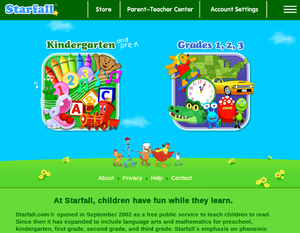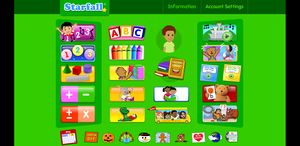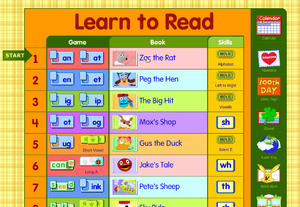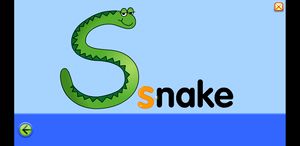Starfall
Introduction
Starfall is a partly free web-based integrated environment to teach basic reading and writing, math and arts, from age 3 to 8 (US prekindergarten, kindergarten to grade 3). Originally, the environment focused on reading skills.
According to it home page (May 2 2019), “Starfall.com® opened in September 2002 as a free public service to teach children to read. Since then it has expanded to include language arts and mathematics for preschool, kindergarten, first grade, second grade, and third grade. Starfall’s emphasis on phonemic awareness, systematic sequential phonics, and common sight words in conjunction with audiovisual interactivity has proven effective in teaching emergent readers. Starfall activities are research-based and align with Individual and Common Core State Standards in English language arts and mathematics.”
According to Wikipedia, “Starfall is a children's website that teaches basic English reading and writing skills. The main demographic is preschoolers, and kindergarteners. It teaches children how to read by using games and phonics. Methods used by the website are based on the research of G. Reid Lyon from the National Institutes of Health and Edward J. Kame'enui from the University of Oregon.[1] Established in 2002, the website is free to use and does not use advertising to generate revenue. The cost of running it is instead covered by money from Blue Mountain Arts, as well as the money made from its workbook printouts.”
Starfall is owned and managed by the Starfall Education Foundation, a publicly supported nonprofit organization. The core activities are free to use, using the mobile app and all contents requires a membership (e.g. $35 for parents, annually).
See also:
- ABCmouse, a fully commercial system
The system
According to the home page (retrieved May 2, 2019), “The program emphasizes exploration, play, and positive reinforcement—encouraging children to become confident and intrinsically motivated. Starfall is an educational alternative to other entertainment choices for children and is especially effective for special education, homeschooling, and English language development (ELD, ELL, ESL). It is widely used in schools that serve children with special needs and learning difficulties.”
Architecture and overall organization
Starfall can be used either as web application or through mobile apps.

Various kinds of activities can be accessed from dashboards.


"learn to read" activities are arranged in a table with levels. For each level there are drag and dropt exerices, a book and extras such as movies.

Learning activity examples
Most learning activities seem to rather simple in design and to the point. Except for video animated presentations they are interactive and rely on various interface techniques. Most seem to use "drag and drop". Instructions are given by audio and are also sometimes written out.
Below a screenshot that shows an activity where children have to complete a word with two letters ("i" from the left and "d" from the right).

The next activity as seen on a mobile phone requires the child to navigate the red block in position using the red arrow controls.

The next activity shows the result of a selection for "s".

The next one shows how a matching pairs puzzle is used to drill multiplication of numbers by 2.

Research
Starfall is supported by research according to its website FAQ: “Our curriculum, materials, website activities, and teacher resources are based on extensive research and consultation with national experts in education. The Starfall team continues to field-test methods, materials, and online content in schools across the United States.”. The page also points to an extensive bibliography used to inform the design.
There is some research that uses the Starfall environment, e.g. Chang & Huang (2012) [2] compared teacher-directed web-based instruction (TDWBI), student-controlled web-based instruction (SCWBI), and traditional classroom instruction without WBI (TCI). “It was found that the TDWBI group outperformed the other two groups in the decoding tests at the end of the study, highlighting the importance of the teacher's role in web-based instruction. However, the SCWBI group demonstrated the most positive attitude toward decoding instruction, suggesting that the students preferred operating the on-line program on their own.” (abstract)
Su and Draper-Rodrigez (2012) [3] compared the effectiveness of a Starfall with AOL learn. “Starfall was observed to engage the children and keep their attention more than AOL Learn”. However, “Of the t-test of the preschoolers who played the AOL’s Learn Your Letters game showed statistically significant (t=2.43, p<0.05) result while the Starfall game returned a none significant result.”. The authors conclude that “It is important to realize that learning games that have high levels of engagement and features (e.g., colors, sounds, animation) may not be the best choice educationally. Engagement has been seen as an important factor in the ability of a computer game to educate; however, in this study, the Starfall game was observed to be significantly more engaging, yet it did not produce a significant educational benefit. This is likely due to the fact that, while AOL Learn Your Letters was observed to be less engaging, it did provide repeated exposure to multiple letters during the time allotted for each child to play the game.”. Overall, the authors have shown in this study that more entertaining games resulted in less academic growth. The authors then ask whether “fun” computer learning games are ineffective by definition or whether game designers do not follow instructional design principles and call for more collaboration.
Leu and Zawilinski (2007) [4] compare online with offline reading reading comprehension differs and argue that they differ in important ways. In the context of this study Starfall is mentioned as providing a nice introduction to the new literacies of online reading, and that it contains, in their opinion, a very good early reading experience. Let us note that the authors also claim that public policies (like "head start") with assessments that only measure offline reading comprehension, actually increase reading achievement gaps, helping the rich to get richer while the poor get poorer.
Bibliography
Cited with footnotes
- ↑ Tsubata, Kate (2007-09-24), The Washington Time, https://www.washingtontimes.com/news/2007/sep/24/web-site-a-tool-to-teach-reading/. Archive: https://www.webcitation.org/5k7WdLmSB
- ↑ Chang, S. M., & Huang, C. C. (2012). Teaching EFL Children Decoding through Web-based Instruction: Students’ Performance, Attitudes, and the Teacher’s Role. paper presented at CALL 2012, http://ir.ncue.edu.tw/ir/handle/987654321/16324
- ↑ Su, B. & Draper-Rodriguez, C. (2012). Identifying the Key Features in Computer Learning Games. In Proceedings of Global TIME -Online Conference on Technology, Innovation, Media & Education (pp. 148-153). Online,: Association for the Advancement of Computing in Education (AACE). Retrieved May 3, 2019 from https://www.learntechlib.org/primary/p/39414/.
- ↑ Leu, D. J., & Zawilinski, L. (2007). The New Literacies of Online Reading Comprehension. New England Reading Association Journal, 43(1), 1. Unquotable preprint: http://www.academia.edu/download/3238296/NERAJ_articlelfinal.doc